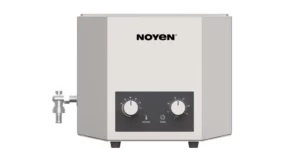 I’ve heard everything about ultrasonic cleaning throughout the years. There’s a lot of
I’ve heard everything about ultrasonic cleaning throughout the years. There’s a lot of
misinformation out there regarding the finest ultrasonic cleaners and what they can and can’t
perform. I’m not sure how or where it originated. This blog post will try to clarify some myths about ultrasonic cleaning.
“Ultrasonic cleaners can’t be used to clean Aluminium”
Whatever the origin of this urban legend is, it is NOT True. An ultrasonic cleaning machine is useful to clean a wide range of metals, as long as a suitable cleaning solution is used. Using a detergent that is safe for Aluminum, you can clean magnesium, titanium, brass, and Aluminum quickly and safely.
“Using an ultrasonic cleaner on a PCB may harm the solder joints“
When it comes to cleaning with ultrasonic devices, many people incorrectly assume that they
function by scrubbing the dirt off surfaces. This is not how this works. Ultrasonic machines create microscopic cavitation bubbles which remove contaminants from the part’s surface. PCBs may be cleaned effectively using ultrasonic cleaning. I am dispelling this common misconception.
“Ultrasonic cleaning is ineffective“
When the right chemicals, cleaning duration, and temperature parameters are applied, ultrasonic cleaning is highly effective in removing contaminants. Likely, some user started this myth by cleaning an item that was much too small for the machine they were using, or by using the incorrect chemicals. Whatever the regularly origin of the myth may be, this claim is just untrue, as hundreds of companies and sectors demonstrate.
“The longer an ultrasonic cleaner operates, the cleaner the parts will be“
Yes! It is true that the longer an ultrasonic cleaning process continues, the cleaner the
components get. The cleaner will achieve better results if run for 5 minutes rather than 3
minutes. As for how clean a component should be, the user has the last say. In certain cases, it may be “clean enough” after only three minutes, while in others, this may take five minutes.
There is always some very small amount of contamination that will stay on the part and will not be removed by any cleaning efforts. If all dirt and debris have been removed after 15 minutes of ultrasonic cleaning, running the washer for an additional 5 minutes will no longer be required.
“Ultrasonic cleaners are not sterile“
False! Ultrasonic cleaners are now the sole means by which many dental, medical, and hospital facilities clean and sterilize their equipment. Every trace of bacteria, mold, and protein-based contamination can be removed from a tool using ultrasonic cleaning solutions. I’m sure my grandma was responsible for spreading this myth; she felt that nothing was clean until it had been immersed in boiling water. That’s out-of-date.
“Before using an ultrasonic cleaner, you must always clean the parts“
False. When using ultrasonic cleaning, there is no need to remove any contaminants from a
component before the start of the cleaning cycle.
Ultrasonic cleaners are fantastic cleaning tools because they operate with a virtually infinite number of materials, remove a wide variety of impurities, and accomplish both in a matter of minutes. Ultrasonic cleaning is only successful if the chemicals, temperature, and cycle duration are all just right. Once this is done, almost anything can be cleaned with ultrasonic waves without any risk or trouble.


